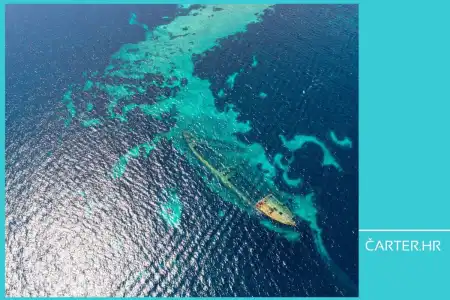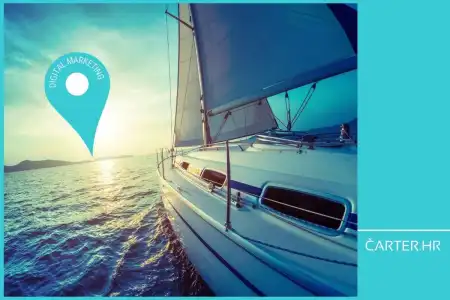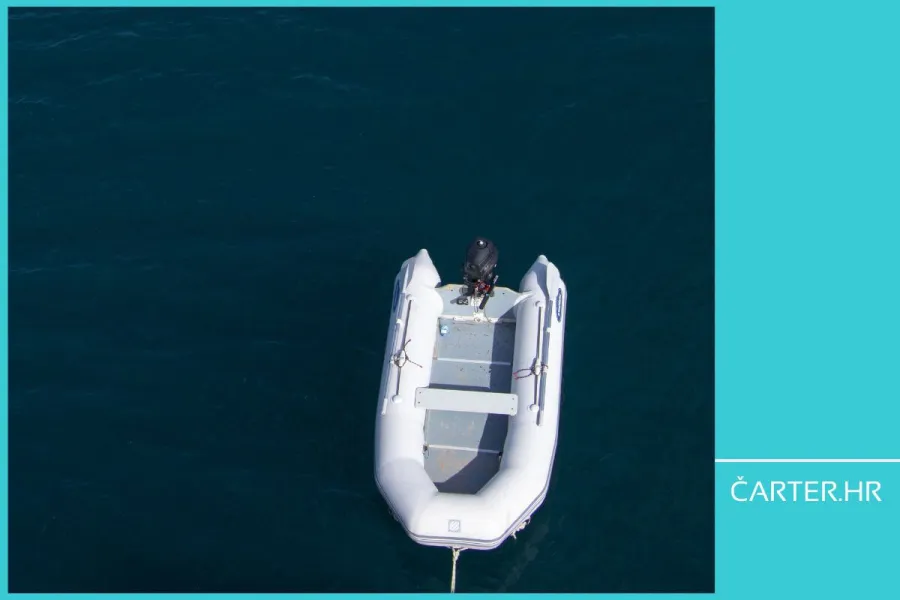
- 16.04.2025.
- News, Regulations
You've probably had at least one discussion about tenders in your yacht charter. No one was quite sure what was allowed and what wasn’t. What is the safe navigation area, is it allowed to transport passengers, etc.? The new Maritime Navigation Safety Ordinance finally resolves the question of the navigation area for tenders, but also brings order to some other segments of navigation.
As of March 21, 2025, the new Maritime Navigation Safety Ordinance (NN 52/2025) came into force, which among other things defines the navigation area for tenders in a more precise manner. Specifically, Article 49, paragraph 9 states that
“A vessel belonging to another maritime object and registered or marked as part of the equipment of the parent object may navigate within an area up to 500 meters from the maritime object it belongs to, except when transporting persons and goods from the maritime object to the nearest mooring place or between the anchorage and the port to which the anchorage belongs.”
In other words – a tender (vessel) registered as part of the equipment of the parent vessel may:
- navigate up to 500 meters away from the parent vessel,
- navigate without restriction when transporting persons and goods from the parent vessel to land, marina, restaurant, anchorage, port, etc.
Let’s recall which vessels can be characterized as belonging to another maritime object and can be registered or marked as part of the equipment of the parent vessel.
According to the Maritime Law (NN 17/2019 and Amendments and Supplements to the Maritime Law, which among other things provides the definition of a ship, boat, yacht...) these are vessels that belong to another maritime object and are not considered boats.
a boat is a vessel intended for sea navigation authorized to carry up to 12 passengers, whose hull length is more than 2.5 meters and less than or equal to 15 meters, or with a total propulsion power greater than 5 kW.
The term "boat" does not include:
- vessels belonging to another maritime object for the purpose of collecting, rescuing, or performing work
- vessels intended exclusively for competitions
- canoes, kayaks, gondolas, and pedal boats
- windsurf boards and wave-riding boards
Therefore, vessels that can be registered as part of the ship's equipment are less than 2.5 meters in length or have a total propulsion power of less than 5 kW. These are the standard auxiliary boats in charters that are included as part of the equipment of the parent vessel.
All other vessels exceeding 2.5 meters in length and propulsion power greater than 5 kW cannot be characterized as part of the parent ship and must be registered in the vessel register.
According to the new ordinance, such vessels have no navigation restrictions and may navigate in accordance with the approved navigation area.
A vessel placed on another maritime object, and registered in the vessel register, for the purpose of performing work, sport, or recreation, may navigate without restrictions in accordance with the approved navigation area.
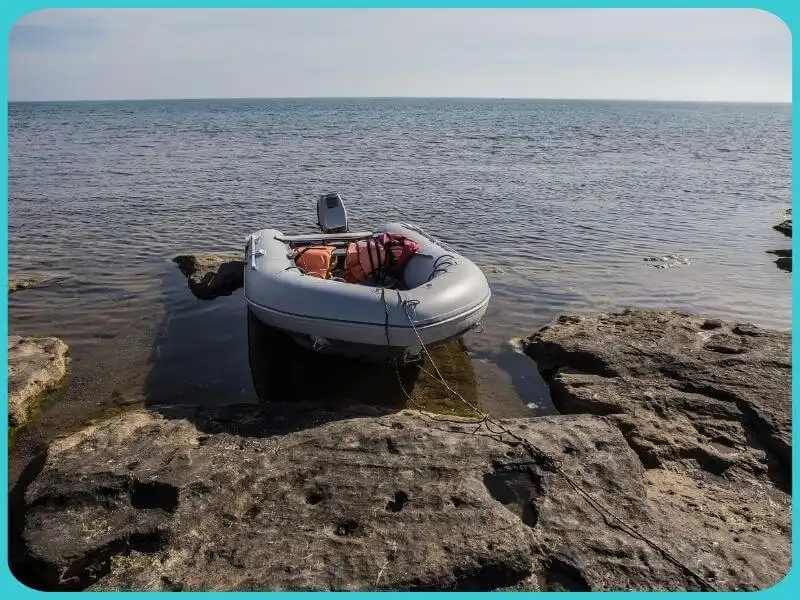
Why is the situation with tenders so important?
There have been many misunderstandings about tenders in yacht charters, especially the larger ones often used on catamarans and bigger yachts. Due to ambiguities in the regulations, a tender (regardless of size and propulsion power) was not considered a separate vessel, and many yacht charter companies did not additionally register it as a boat because it was already considered “part of the equipment.”
Supervisory bodies interpreted this differently, which resulted in fines and problems in the field.
If a skipper was transporting guests with a tender longer than 2.5 meters and with an engine power greater than 5 kW, and the tender did not have its own registration and papers, the yacht charter company could receive a fine – even though it was the same tender that, for example, comes with the catamaran as standard equipment.
The new navigation safety ordinance simply defines more clearly the navigation area for such vessels. What do you need to do?
1. Check whether the tender you are renting with the parent vessel is registered as equipment
Does it comply with the provisions of the Maritime Code and, if it does not fall into the boat category and has not been listed anywhere so far – officially register it as part of the equipment of the parent vessel.
2. Include a notice about the use of tenders in skipper instructions
Skippers and guests must know that a tender registered as part of the equipment:
- must not navigate more than 500 meters from the parent vessel
- may freely transport passengers and goods from the parent vessel to land, anchorage, or port
3. Register tenders longer than 2.5 m and with more than 5 kW engine power (if you haven’t already)
If your fleet includes a tender that falls into the boat category, then you definitely need to have valid registration and the required documentation (as well as valid insurance policies).
Reminder – other rules that still apply
Although the new Maritime Navigation Safety Ordinance more clearly defines certain items, it is worth noting that:
(8) Vessels and personal watercraft must at all times navigate in such a way that their navigation and actions do not pose a danger to human life, property, the coastline, the marine environment, or the safety of navigation of other vessels and personal watercraft, in accordance with prevailing conditions and situations, as well as spatial and other limitations.
In addition to everything mentioned above, the new ordinance also defines some restrictions to watch out for:
Ban on navigating too close to the coast and swimming areas:
- Vessels longer than 30 m: min. 300 m from the coast.
- Vessels 15–30 m: min. 150 m.
- Vessels <15 m (most charters): min. 50 m.
Exception: docking, anchoring, entering or leaving port at reduced speed.
Ban on tying to objects not intended for mooring: e.g. buoys, lighthouses, navigation signs, pipelines, etc.
All this should be clearly communicated to both guests and skippers – because even though these are “technical details,” misinterpretation can lead to fines.
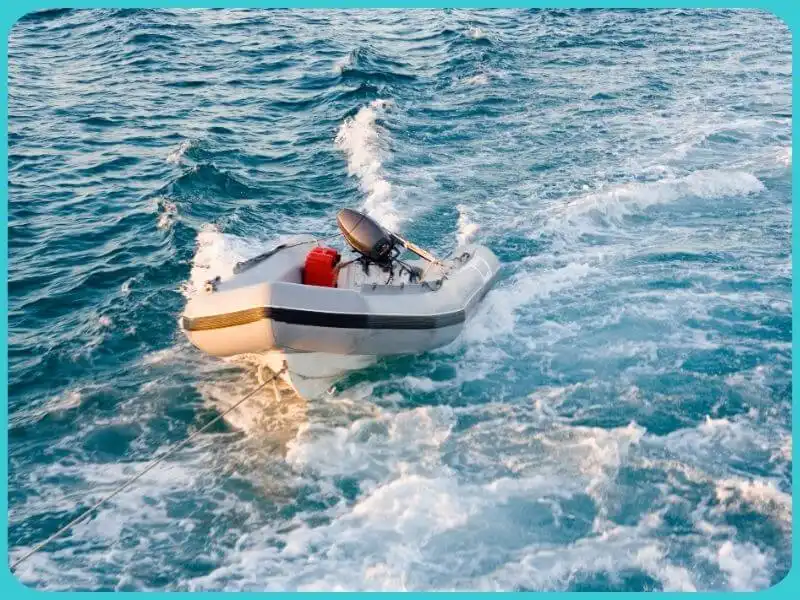
Still, things are clearer now
For yacht charter companies, tenders are an essential part of operations. These changes in the new Maritime Navigation Safety Ordinance don’t bring anything dramatically new – but they finally put an end to the “can or can’t the tender” debates that have troubled yacht charter companies for years.
If you know what you have in your fleet and how it’s registered, there’s no room for confusion or fines. The key is clarity: check the papers, align the instructions, and don’t forget that guests are often uninformed – which means it’s your responsibility to provide them with accurate information.
You can always find the new Maritime Navigation Safety Ordinance on charter.hr Info, along with other information in one place. An official directive from the Ministry of the Sea, Transport and Infrastructure is still awaited.
Don’t forget to sign up for our regular newsletter, for even more information and tools about the yacht charter and nautical industry.
Categories of trends
- News
- Sale
- Marketing
- SEO
- Web design
- Social media
- Technology
- Regulations
- Management
- Education
- Finances
- User experience
Newsletter
Sign up for the newsletter and receive the latest trends and tips straight to your inbox


